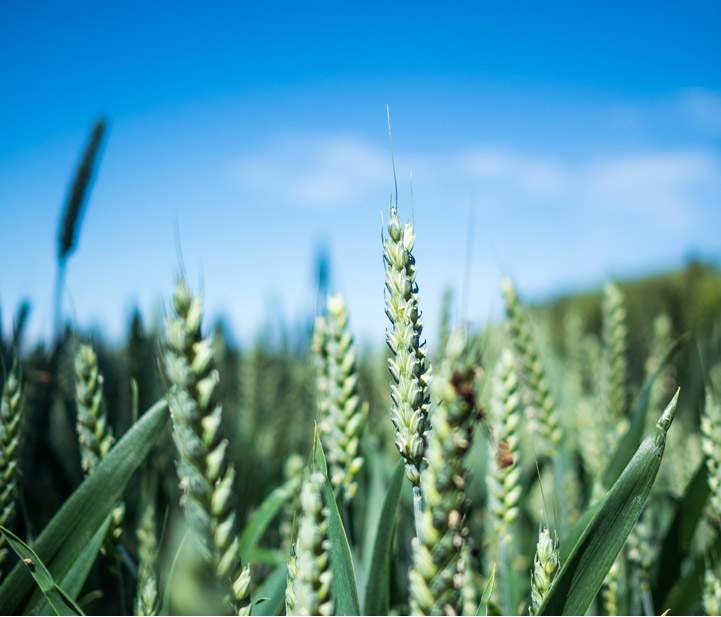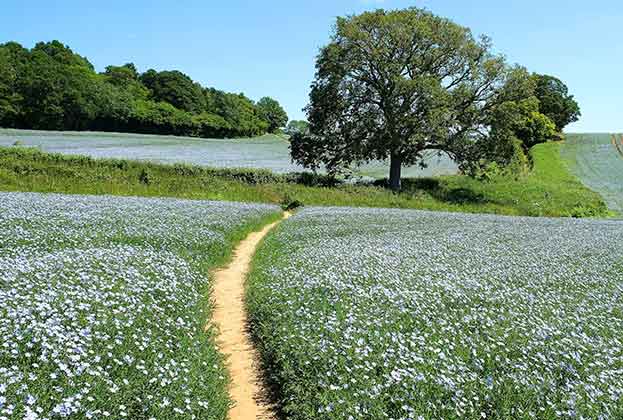Value appreciation to slow due to economic challenges, weaker demand and increased availability of farmland
The beauty of land is its flexibility, which means it appeals to different types of buyers with a range of objectives. Farmers and lifestyle buyers are the two largest groups and the proportion of purchases they make changes each year according to their relative prospects. When farm incomes declined in the early 2000s, farmers were less likely to be purchasers, but they succeeded in a higher proportion of transactions when the global financial crisis impacted lifestyle buyers later that decade (figure 5).
Institutions have a long history of farmland ownership and were particularly active during the 1980s. Since 2000 institutional, corporate and charity buyers have typically accounted for between 8-12% of annual purchases. Their activity started increasing in 2020 when it became clear rural land was part of the solution to climate change and there was an urgent need to improve biodiversity. Since completing 17% of transactions in that year, the trend has continued and in 2023 they bought 14% of farms offered for sale. For some land ownership provides an opportunity to reduce their climate impact or meet their charitable objectives, while for others the growing market for nature-based solutions is a business opportunity. One of the active buyers of lower productivity land is Oxygen Conservation (see case study below), which is mission-driven with a commercial approach that allows it to magnify its positive environmental impact.
BUYER PROFILE CASE STUDY
When investing, a key mantra is to think long-term – think decades, not years. But what about centuries? That is the distinct ambition of Oxygen Conservation, to invest in natural and social capital and create long-term, permanent improvement at scale. How does it identify suitable property to achieve this?
WHAT TYPE OF PROPERTY IS NEEDED?
Oxygen’s portfolio is diverse although it does not buy grade 1 or 2 land. It has property in eight counties, varying from a 12,000-acre site in the Scottish highlands to 774 acres of rolling countryside on the edge of Exmoor National Park and a coastal SSSI in Wales at Esgair Arth.
Having a range of property means the process of restoring each site is bespoke. It is based on up to two years of analysis and has led to some challenges. “In conservation, we live with contradictions and compromises,” says Rich Stockdale, founder of Oxygen Conservation. “On one of our sites, the number of deer needs to decrease to allow biodiversity. Am I happy about that? No. But we don’t have the luxury of black and white in conservation”.
HOW IS IT FUNDED?
Initial investment has been sourced from the Oxygen House Group and a loan from Triodos Bank. Its approach to natural capital investment involves income generation from existing properties including ecotourism, wind and solar energy plus the sale of independently verified natural capital products will play a role in funding future property purchases.
DEMAND INFLUENCES
Considering the flexibility of land use and the diversity of buyers it is no surprise that a wide range of factors influence the demand for farmland. We have listed below what we believe are currently the four most significant influences with some analysis of why.
1. Strength of the economy and taxation policy: Driven by improved trading prospects and optimism about the economy, the Lloyds Bank Business Barometer measure of overall business confidence recovered in November to its level before Russia invaded Ukraine. This suggests businesses are adapting to the economic challenges it caused. During 2023 the Bank of England base rate increased from 3.5% to 5.25% leading to higher income on cash deposits or costlier borrowings. Both are impacting the demand for farmland as some investors favour a fixed-rate cash investment over investing in real assets like farmland. For some buyers who require mortgage funding, the higher cost of debt and banks’ stronger focus on debt’s serviceability from income is restricting their ability to compete for larger properties.
Inflation is dropping and the base rate has been held at 5.25% for three months. Bank of England governor Andrew Bailey has said it won’t be cut in the “foreseeable future”, although a recent Times poll found a majority of economists expect a number of reductions this year.
The farmland market has continued to prove resilient, indeed this is one reason owners choose to hold or buy farmland. Its inheritance tax exemptions are a factor too; it has been reported that the chancellor is considering cutting the rate of tax or increasing the personal allowance. Changes of this nature would reduce the advantage agriculture property holds over other property assets but wouldn’t create any tax liability.
2. Farm expansion and production: After taking into account all the changes to payments, regulations and schemes, 39% of farmers are positive about their future in farming according to Defra’s April 2023 Farmer Opinion Tracker. Around a fifth said they were planning to expand their business. Provided it is within their financial means, demand for farmland from neighbouring farmers will continue to be strong because local opportunities to expand are rare – less than 0.5% of farmland is publicly traded in any given year.
The demand for food, fibre and fuel products will increase. The recent Biomass Strategy was clear that perennial energy crops will account for a major part of the domestic increase in biomass production and set an ambition to establish 42,000 acres a year within 15 years, whereas the total crop area is around 25,000 acres today. It is expected investors will be attracted by the index-linked returns offered by this market.
3. Nature-based solutions: Nature-based solutions are becoming a mainstream land use rather than a disrupter. Their markets have matured, buyers now have more defined business cases and their land requirements are increasingly geographically and physically specific. While stacking land uses is possible, agricultural productivity is typically reduced so each market increases the demands being placed on our limited land base, the strongest demand for farmland currently relates to these markets:
- Biodiversity Net Gain which becomes mandatory in England in early 2024 and is expected to require over 3,200 acres of habitat creation each year.
- Nutrient offsets are essential in affected catchments and the autumn statement awarded planning authorities £110 million to develop local mitigation schemes.
- The UK’s ambition is to plant 74,000 additional acres of woodland per year from May 2024, which is more than double the current rate. The concept of “the right tree in the right place” is now being applied more firmly, focusing afforestation on lower-quality land.

4. Rollover buyers: Activity in the development land market is slowing and greenfield development site values have continued to soften, falling by 8% in the 12 months to September 2023 (Savills Residential Development Land Index). Despite the downward pressure, values are proving more resilient in some markets due to constrained supply as 22% fewer homes were granted planning consent in the 12 months to June 2023 compared to the previous peak in planning consents in the 12 months to June 2021. Savills development research concludes that appetite for land is mixed: the major housebuilders are cautious but private housebuilders backed by private finance are taking the opportunity to realise their growth ambitions.
A weakening market for development land will mean there are fewer new Business Asset Rollover Relief (BARR) motivated buyers competing to buy farmland. But this pool of buyers and funds will decline over time rather than disappear. This is because BARR allows the farmland acquisition to be made up to three years after the development land is sold. Secondly, developers now prefer to buy development land on deferred payment terms so past sales are still paying out.
FORECASTS
Taking all these factors into account we forecast that growth in farmland values will be modest. There is now a general expectation that the base rate will be “higher for longer” and not return to the lows of the last decade. So economic challenges will weaken demand at the same time as agricultural policy is driving changes within the industry that are leading to the amount of farmland being offered for sale increasing more rapidly than we anticipated last year. As a result, we have revised our forecasts downwards.
Rollover buyers’ interest tends to be focused on arable land so where they remain active in the market we expect this to positively influence arable land values. We forecast that prime arable and grade 3 arable land values will increase by a national average of 3% and 2.5% per annum respectively over the next five years (figure 6). Only modest growth is now expected for pasture values as the agricultural transition and current iterations of the new support offerings will challenge livestock farming economics more heavily. We forecast that over the next five years grade 3 pasture values will increase at an average rate of 2%, while an average increase of 1.5% per annum is anticipated for poorer quality pasture land.
Read the articles within Spotlight: The Farmland Market below.

